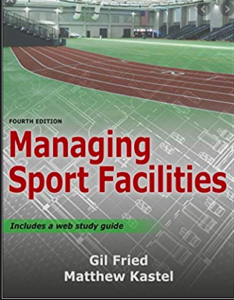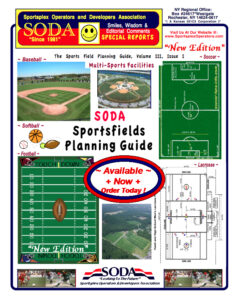![]() Player safety begins in the dugout. A poorly conceived dugout can leave players at risk from overthrows and lined fouls. Consider these recommendations when planning or improving your facility’s dugouts.
Player safety begins in the dugout. A poorly conceived dugout can leave players at risk from overthrows and lined fouls. Consider these recommendations when planning or improving your facility’s dugouts.
Determine their location.
![]() Using the 3rd base dugout as an example, the area where your dugout should be located can be represented by two string lines, from 2nd to 3rd and beyond, and from 1st to home. Placing dugouts in this range will help prevent injuries from overthrows should the dugout drift too far “up the line.”
Using the 3rd base dugout as an example, the area where your dugout should be located can be represented by two string lines, from 2nd to 3rd and beyond, and from 1st to home. Placing dugouts in this range will help prevent injuries from overthrows should the dugout drift too far “up the line.”
The corner of the dugout closest to home plate should have a minimum distance of 35′ for softball and 45′ minimum for baseball. This will provide ondeck hitters and players in open dugouts with adequate protection from foul balls. The angle can deviate from parallel to the baseline to accommodate site constraints and placement of amenities. Always make your dugouts symmetrical.
Choose at-grade or below grade.
Big league dugouts typically are sunken and they are designed that way to maximize seating and visibility for fans. Most other facilities find at-grade dugout elevation to be the way to go. If you do install sunken dugouts, include large drains with catch basins to filter the garbage and seeds ahead of the drain line to prevent clogging and flooding.
Determine dugout length.
Dugout length is determined by the oldest age group of players using the field, and the size of team rosters. For various ages, we recommend these lengths:
- 6-12 yrs: minimum 20‘ long
- 13-21 yrs: minimum 30‘ long
- Over 21 yrs: 30′ – 40‘ long
Determine dugout depth.
Your options for depth are 8′ to 12′. If the front face of the dugout is fully fenced or netted, then 8′-10′ is deep enough, as players will typically hang on the fence. Dugouts with half walls and room to lean or sit in front, and a second bench along the back of the dugout, will require more depth (10′-12′).
Determine dugout height.
Your options for height are 8′ to 12′. Our recommendation: go taller. Even youth leagues will have adults in the dugouts. Anyone standing on the lower step of the bench should have clearance without hitting their head on the roof.
Select back side closure.
Choose from chain link fencing (with or without windscreen and roof system), poured concrete, concrete block, brick or decorative stone. Chain link with roof kit and windscreen is the most economical option to allow player privacy. Poured concrete can be a quick solution, but requires crane rental. Stylish, branded dugouts use a hybrid of materials and texture, but also have the highest cost.
Select front face closure.
Check the league governing body rules for any safety requirements with the front of your dugouts. While baseball has many options (full-height fencing; half-fencing / half-netting; bottom half padded rail and netting combo), softball fields should always have full protection due to the close proximity of home plate. Also consider extending backstop netting over the top of the dugout to protect fans, as well as extending the netting in front of the dugout. At least two, but not more than three, points of entry to the playing field should be designed into your dugouts.
**********************************************************
“NEW” Amateur Sports Added !
. . . . . . . . . . . . . . . . . . . . . . . .
We Can Save More Money In 2022 !
* ( 26 Different Amateur Sports ) *
( Teams, Officials, Tournaments, & Facilities ) *
1-800-622-7370
. . . . . . . . . . . . . . . . . . . . . . . .
www.sadlersports.com/soda
. . . . . . . . . . . . . . . . . . . . . . . .
“Proudly Serving The USA/Canada
Since 1981”
www.sportsplexoperators.com
. . . . . . . . . . . . . . . . . . . . . . .
. . . . . . . . . . . . . . . . . . . . . . . . . . . . . . . . . . .
“Proudly Serving The USA/Canada
Since 1981”
. . . . . . . . . . . . . . . . . . . . . . . . . . . . . . . . . .
 [[ Available In SODA Store Online !]]
[[ Available In SODA Store Online !]]





0 Comments